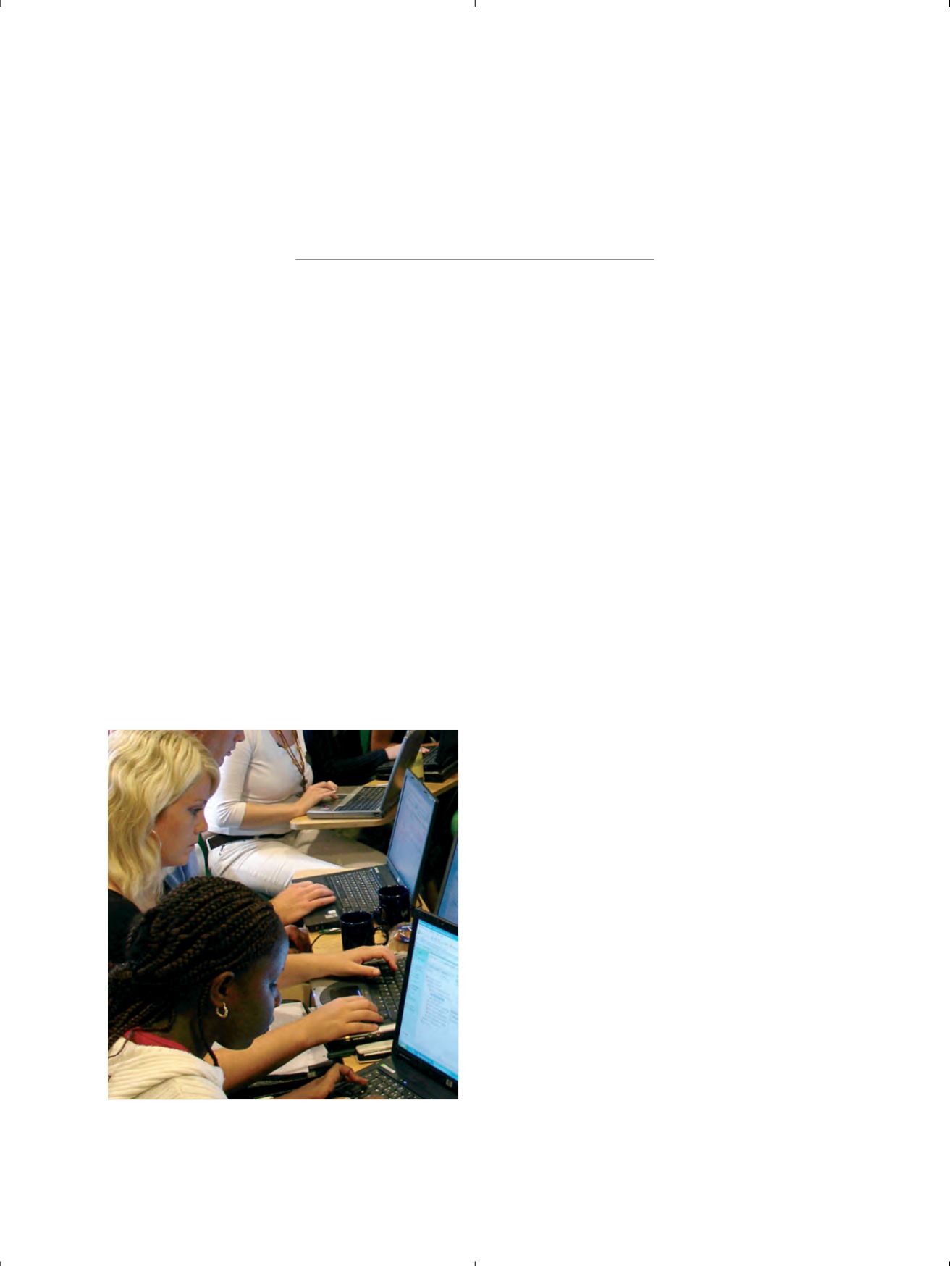

[
] 151
G
LOBALIZATION IMPACTS MANY
aspects of our lives: our
economy, our workplaces, how we produce and consume,
how we interact and communicate, and how we develop
and deliver education are some examples. The main driving forces
behind globalization are increasingly open global markets and
rapid technological developments. Information and communi-
cation technology (ICT) have facilitated communication around
the globe, and made possible instantaneous contact between
persons, organizations and businesses situated on different conti-
nents for a reasonable price.
The number of people with access to the Internet in the world
approaches a total of 80 per 1 000, with as many as 400 per 1 000
in high-income countries; but only 1.8 persons per 1 000 in the
least developed countries.
1
This elite group has the opportunity
of synergetic collaboration; has access to goods, services and
updated information in all areas, and can work more or less inde-
pendently of governments and national laws. Those who do not
have access are inevitably excluded.
The dividing line goes between the industrialized countries and
developing countries. Rapid population growth and lack of qual-
ified teachers in developing countries make the need for educa-
tion ever more urgent. Sub-Saharan Africa is the worst off with
poor infrastructure, lack of expertise, poor bandwidth capacity if
any, excessive Internet connection costs and a rapidly growing
population combined with dwindling resources for education.
2
The digital divide is real, and accelerating. Leaders in developing
countries are aware and are concerned: “The overwhelming
majority of developing countries, despite difficulties, problems
and fears, seek as far as possible to take part in the formation of
the global educational community.”
3
Unless the international community commits itself to change
this development, the poor countries of the world will be left
behind. There is an increasingly urgent need for measures that
includes, not excludes, and for a gradual closing of the digital
divide instead of accelerating it.
The Global Virtual University (GVU) under the auspices of the
United Nations University (UNU) is an international consortium
of universities offering study programmes and courses intended
to be ‘global’, where students from different continents learn
collaboratively and online, with a UN perspective on the learning
content.
E-learning for a sustainable future
The vision of GVU is to contribute to a sustainable future with a
focus on developing countries making use of the latest e-learning
pedagogy and technology.
The mission is to increase people’s sensitivity to, and involve-
ment in, finding solutions for environment and development
issues. This shall be accomplished by mobilizing a network of
universities in developed and developing countries to participate
in creating online educational programmes in global environ-
mental and development studies and to provide support to these
universities.
The global markets, where multinational corporations domi-
nate, tend to expose increasing numbers of people to a westernized
consumer lifestyle. Multinational corporations also compete for
scarce natural resources. In this situation, good governance is a
key for achieving a more sustainable development. Increasing
awareness, changing attitudes and above all appropriate knowl-
edge and skills are decisive factors.
The eight Millennium Development Goals (MDGs) – which
range from halving extreme poverty to halting the spread of
HIV/AIDS and providing universal primary education by the target
date of 2015 – form a blueprint agreed to by all the world’s coun-
tries and the world’s leading development institutions.
United Nations Secretary-General Kofi Annan has commented:
“We will have time to reach the Millennium Development Goals
Building partnerships to educate the world:
the UNU/GVU strategy
Sven Åke Bjørke and Harald Holt, Arendal, Norway
Together in a face-to-face-session, but working with different groups in a
virtual classroom. Deep concentration is necessary when learning to
function in this new setting
Photo: Åke Bjørke
















